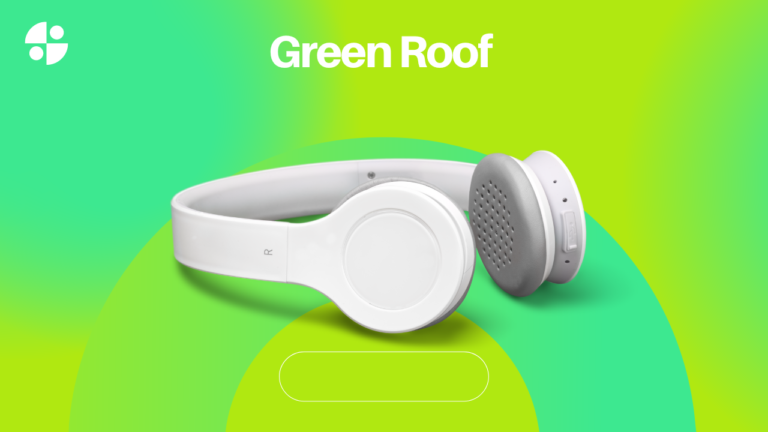DIY Rainwater Harvesting Systems: A Step-by-Step Guide
\”DIY Rainwater Harvesting Systems\” are an effective way to conserve water and make use of natural resources. By capturing and storing rainwater, you can reduce your reliance on municipal water supplies and lower your water bills. This comprehensive guide will walk you through the benefits of rainwater harvesting, how to set up your own system, and tips for maintaining it effectively.
What Are DIY Rainwater Harvesting Systems?
DIY rainwater harvesting systems are setups that collect, filter, and store rainwater for various uses around your home. These systems can range from simple barrels placed under downspouts to more complex setups that include filtration and pumping mechanisms. The primary goal is to capture rainwater that would otherwise run off and be wasted, making it available for irrigation, flushing toilets, washing cars, and even drinking, if properly treated.
Benefits of DIY Rainwater Harvesting Systems
Water Conservation
One of the most significant benefits of DIY rainwater harvesting systems is water conservation. By capturing rainwater, you reduce the demand on municipal water supplies, which is especially important in areas prone to drought or water shortages.
Cost Savings
Using harvested rainwater can lead to substantial cost savings on your water bills. For activities like gardening and washing cars, rainwater is a free resource that can replace the need for using treated tap water.
Environmental Benefits
Rainwater harvesting reduces stormwater runoff, which can help prevent erosion, reduce flooding, and minimize the pollution of natural waterways. By using rainwater, you also lessen the energy and resources required to treat and deliver municipal water.
Independence and Resilience
Having your own rainwater harvesting system increases your water independence and resilience in the face of water supply disruptions. This can be particularly beneficial in remote or rural areas where access to municipal water is limited.
Improved Plant Health
Rainwater is free of many chemicals and salts found in tap water, making it ideal for irrigating plants. Using rainwater can lead to healthier, more vibrant gardens and landscapes.
Setting Up DIY Rainwater Harvesting Systems
Choosing the Right System
There are various types of DIY rainwater harvesting systems, ranging from simple to complex. The right system for you will depend on your needs, budget, and available space. Here are a few common types:
- Rain Barrels: The simplest and most affordable option, rain barrels are placed under downspouts to collect rainwater. They typically have a spigot for easy access to the water.
- Dry Systems: These systems involve a direct downspout connection to a larger storage tank. The water flows into the tank and is stored for later use.
- Wet Systems: In wet systems, underground pipes transport rainwater from multiple downspouts to a storage tank. These systems are more complex and suitable for larger-scale harvesting.
Essential Components
Regardless of the type of system you choose, there are a few essential components you\’ll need:
- Catchment Area: This is the surface that collects rainwater, typically your roof.
- Gutters and Downspouts: These direct rainwater from the roof to your storage system.
- First Flush Diverter: This device diverts the initial flow of rainwater, which may contain debris and contaminants, away from your storage tank.
- Storage Tank: The container where collected rainwater is stored. Tanks can vary in size and material, including plastic, metal, or concrete.
- Filtration System: Filters help remove debris and contaminants from the water, especially if you plan to use it for drinking or household purposes.
- Pump: A pump may be necessary to distribute stored water to various parts of your home or garden.
Step-by-Step Guide to Setting Up a DIY Rainwater Harvesting System
Step 1: Calculate Your Water Needs
Determine how much water you need based on your intended uses. This will help you decide on the size of your storage tank. For example, a typical garden requires about 0.62 gallons of water per square foot per week.
Step 2: Assess Your Catchment Area
Calculate the potential rainwater harvest by measuring your roof\’s surface area. For example, 1 inch of rain on a 1,000-square-foot roof can yield approximately 600 gallons of water.
Step 3: Choose and Prepare Your Storage Tank
Select a storage tank that fits your water needs and available space. Place the tank on a stable, level surface close to your downspouts. If necessary, install a foundation or platform to support the tank.
Step 4: Install Gutters and Downspouts
Ensure your gutters and downspouts are clean and in good condition. Position the downspouts to direct rainwater into your storage tank. Install screens or guards to keep out debris.
Step 5: Add a First Flush Diverter
Install a first flush diverter on your downspout to capture the initial flow of rainwater, which may contain contaminants. This helps ensure cleaner water enters your storage tank.
Step 6: Set Up the Filtration System
Install filters to remove debris and contaminants from the collected rainwater. Simple mesh screens can filter large particles, while more advanced filters can remove finer contaminants.
Step 7: Connect the Storage Tank
Connect the downspout to your storage tank using appropriate piping. Ensure all connections are secure and leak-free. Install an overflow outlet to manage excess water during heavy rains.
Step 8: Install a Pump (If Needed)
If you plan to use the harvested rainwater for household purposes or irrigation, you may need a pump to distribute the water. Install the pump according to the manufacturer\’s instructions.
Step 9: Test the System
Once everything is set up, test your system by observing it during a rain event. Check for leaks, ensure water flows correctly into the storage tank, and verify that the filtration system is working.
Maintaining Your DIY Rainwater Harvesting System
Regular maintenance is essential to keep your rainwater harvesting system functioning effectively. Here are some maintenance tips:
- Clean Gutters and Downspouts: Regularly remove debris from gutters and downspouts to prevent blockages.
- Inspect the First Flush Diverter: Clean and inspect the diverter to ensure it functions correctly.
- Check Filters: Clean or replace filters as needed to maintain water quality.
- Monitor the Storage Tank: Check the tank for leaks or damage. Clean the tank periodically to prevent algae growth and sediment buildup.
- Winterize the System: In colder climates, take steps to prevent freezing, such as draining the system or insulating pipes and tanks.
Final Thoughts on DIY Rainwater Harvesting Systems
DIY rainwater harvesting systems offer a practical and sustainable way to conserve water and reduce your environmental impact. By capturing and using rainwater, you can lower your water bills, support healthy plant growth, and contribute to water conservation efforts. While setting up a system requires an initial investment of time and resources, the long-term benefits make it a worthwhile endeavor for any homeowner.
FAQs on DIY Rainwater Harvesting Systems
Q: How much rainwater can I collect from my roof?
A: The amount of rainwater you can collect depends on your roof size and the amount of rainfall. As a general rule, 1 inch of rain on a 1,000-square-foot roof can yield about 600 gallons of water.
Q: Is rainwater safe to drink?
A: Rainwater can be safe to drink if properly filtered and treated. It is essential to use a multi-stage filtration system and possibly UV or chemical disinfection to ensure water quality.
Q: Can I use harvested rainwater for indoor purposes?
A: Yes, harvested rainwater can be used for indoor purposes such as flushing toilets and washing clothes. However, ensure proper filtration and treatment if using it for drinking or cooking.
Q: Do I need a permit to install a rainwater harvesting system?
A: Regulations regarding rainwater harvesting vary by location. Check with your local government or water authority to determine if permits are required.
Q: How do I prevent mosquitoes from breeding in my storage tank?
A: To prevent mosquitoes, ensure your tank is tightly sealed and use screens or mesh over inlets and outlets. Adding mosquito dunks, which contain natural larvicides, can also help control mosquito breeding.
Q: What materials are best for storage tanks?
A: Common materials for storage tanks include plastic (polyethylene), metal (steel or aluminum), and concrete. Each material has its advantages, so choose one that fits your needs and budget.
Q: How often should I clean my rainwater harvesting system?
A: Regular maintenance is crucial. Clean gutters and filters every few months, and inspect the storage tank annually. More frequent cleaning may be necessary in areas with heavy rainfall or high debris levels.
By following this guide, you can set up and maintain an efficient DIY rainwater harvesting system, contributing to a more sustainable lifestyle while enjoying the benefits of fresh, free water for your home and garden.





